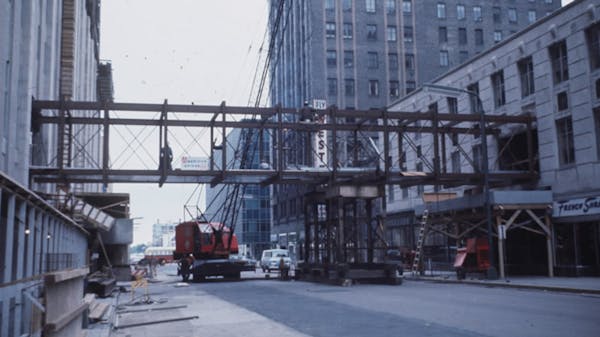Counterpoint
The skyway system in downtown Minneapolis began as a single link that was the idea of architect Ed Baker decades ago. Since then, it has become a signature element.
As noted by a Jan. 22 headline ("City's maze of skyways: A dead end?"), it has also become a confusing armature of our downtown urban form.
Unlikely as it sounds, Venice, Italy, offers some guidance toward the solutions to this and other problems of the skyway system.
In terms of urban structure and function, the streets of Venice and the skyways of Minneapolis resemble each other in interesting ways.
Visitors to Venice often say it is a baffling labyrinth of pedestrian streets. It isn't for the Venetians.
There is an order they can follow that is lacking in the skyway system. Over 13 years of teaching in Venice, I have found that in a week or two, my students see this order, too.
The skyways could be less confusing if they were provided with some of the attributes Venice has.
Venice is an archipelago of islands connected by bridges. Each island has "calle" (pedestrian streets) that connect over bridges to adjacent islands.
Vehicular traffic (boats) is in the canals that surround the islands, about three to four feet below the pedestrian street level. Each island has a "campo" (public square) that serves as both an outdoor "living room" for the island and as a landmark for orientation. Venetians give directions using the squares as landmarks.
Similarly, our skyways (pedestrian streets) connect "islands" of city blocks. Motor-vehicle traffic moves in the "canals" of pavement a floor below, surrounding each block.
However, most blocks (not all) lack a "public square." Making small public squares internal to the blocks would provide landmarks for orientation inside each block.
Because the squares in Venice are intersections with high foot traffic, the storefronts that surround them command higher retail rents. Ours should, too.
In Venice, the squares all have names, as do the pedestrian streets -- navigation in the skyways would also benefit from this. Distinctive paving and lighting also would help.
The skyway bridges offer punctuations of sunlight, openness and long views down our paved motor vehicle "canals" in much the same way as the bridges of Venice. Venetian bridges are beautiful objects of attention as one looks down a canal from one bridge to the other.
Many skyway bridges (again, not all) contribute only neutrality to the urban scene. Also, like its Bridge of Sighs (the very first skyway), all the bridges of Venice have names. Ours should, too. (Naming rights in exchange for improving bridge façades?)
Most important, the pedestrian streets and bridges of Venice are publicly owned and maintained. Minneapolis should embark on a program to achieve the same.
Skyway streets and bridges can be owned separately, in a way similar to condominium apartments. Acquire them through eminent domain as rights-of-way, easements or possibly 99-year leases. Good real-estate lawyers could figure this out.
The city would then have much better capacity to control skyways and access to them. This would help solve many of the problems that are now addressed poorly through policy and negotiation. Future accessibility to the skyways would be assured.
Building owners would have more predictability about the value of skyways and their presence as infrastructure-supporting investment. City Hall would have the obligation to maintain the skyways, keeping them clean, safe and in good repair.
Public ownership would also reduce liability for building owners by shifting it to the municipality, which has important legal protections different from those of private building owners.
The shift to public ownership could qualify as public improvements, funded by special assessments against benefiting properties. This is how street improvements in business districts are commonly funded.
Further, the assessments could be made through the establishment of a special district, so that there is a continuing entity to fund maintenance. Consistent opening and closing times could be assured, improving downtown's competitiveness with that of suburban malls.
These ideas wouldn't fix all the problems of the skyways, but they would address some important ones. Political support and opposition will be a huge issue.
In the end, transforming skyways to the equivalent of public streets will offer more ways for making them more reliable and functional as infrastructure, and less of a tourist "curiosity."
* * *
Robert D. Sykes is associate professor of landscape architecture at the University of Minnesota.
Ukraine aid vote is a domestic and geopolitical inflection point



